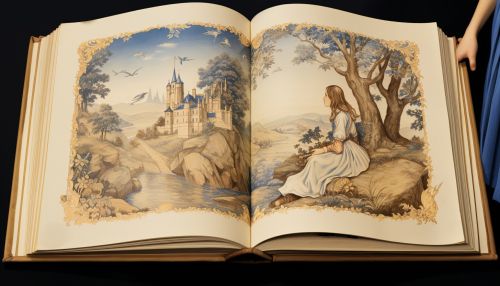Giantess
Origins and Mythology


The concept of the giantess has its roots in various mythologies and folklore around the world. In Norse mythology, the Jotnar were often depicted as giantesses, such as Angrboda, the mother of monsters. Similarly, in Greek mythology, Gaia, the personification of Earth, was often depicted as a giantess. These mythological figures were often associated with the natural world, symbolizing the immense power and scale of nature.
In many cultures, the giantess is seen as a figure of power and authority, often associated with the primal forces of nature. They are often depicted as being of extraordinary size and strength, capable of feats beyond the capabilities of ordinary humans. Their size and power often serve as a metaphor for the overwhelming force of nature, and the insignificance of human beings in comparison.
In Literature and Art


The giantess has been a recurring figure in literature and art throughout history. In the epic poem Beowulf, the character of Grendel's mother is a monstrous giantess who seeks revenge for the death of her son. In the fairy tale "Jack and the Beanstalk", the giant's wife is a sympathetic figure who helps Jack escape from her husband.
In art, the giantess is often depicted as a figure of awe and terror, towering over the landscape and the tiny humans below. However, she can also be a figure of beauty and majesty, representing the sublime power of nature. Artists such as Francisco Goya and Gustave Doré have used the figure of the giantess to explore themes of power, scale, and the sublime.
In Popular Culture


In contemporary popular culture, the giantess is a common trope in various media, from films and television to comic books and video games. In films such as "Attack of the 50 Foot Woman" and "Village of the Giants", the giantess is often portrayed as a figure of terror and destruction, rampaging through cities and causing chaos. In contrast, in animated films and television shows, the giantess is often a sympathetic character, misunderstood and feared because of her size.
In comic books and graphic novels, the giantess is often a superhero or villain, her size and strength giving her extraordinary powers. Characters such as Giganta from DC Comics and Stature from Marvel Comics are examples of this trope. In video games, the giantess is often a boss character, providing a formidable challenge for the player.
Psychological and Sociocultural Interpretations


From a psychological perspective, the giantess can be seen as a symbol of the unconscious mind, representing the vast, unknown depths of the psyche. Carl Jung, a Swiss psychiatrist and psychoanalyst, referred to this concept as the "anima", the unconscious feminine side of a man. The giantess, with her immense size and power, can be seen as a manifestation of this anima, representing the overwhelming power and mystery of the unconscious mind.
From a sociocultural perspective, the giantess can be seen as a symbol of female empowerment, challenging traditional gender roles and expectations. The giantess, with her size and strength, subverts the traditional image of the passive, delicate female, instead presenting a woman who is powerful and in control. This can be seen as a reflection of the changing roles and perceptions of women in society.
